Work in Progress Lecture Series
Crafting Kashmir: Painting & Stitching Place in the Nineteenth Century
Fatima Quraishi, Ph.D., Assistant Professor of Art History
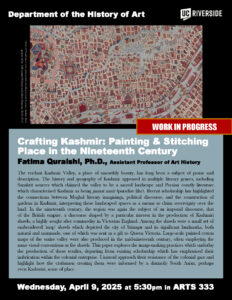 The verdant Kashmir Valley, a place of unearthly beauty, has long been a subject of praise and description. The history and geography of Kashmir appeared in multiple literary genres, including Sanskrit sources which claimed the valley to be a sacred landscape and Persian courtly literature which characterised Kashmir as being jannat nazir (paradise like). Recent scholarship has highlighted the connections between Mughal literary imaginings, political discourse, and the construction of gardens in Kashmir, interpreting these landscaped spaces as a means to claim sovereignty over the land. In the nineteenth century, the region was again the subject of an imperial discourse, that of the British empire, a discourse shaped by a particular interest in the production of Kashmiri shawls, a highly sought after commodity in Victorian England. Among the shawls were a small set of embroidered ‘map’ shawls which depicted the city of Srinagar and its significant landmarks, both natural and manmade, one of which was sent as a gift to Queen Victoria. Large-scale painted cotton maps of the entire valley were also produced in the mid-nineteenth century, often employing the same visual conventions as the shawls. This paper explores the image-making practices which underlay the production of these textiles, departing from existing scholarship which has emphasized their imbrication within the colonial enterprise. I instead approach their resistance of the colonial gaze and highlight how the craftsmen creating them were informed by a distinctly South Asian, perhaps even Kashmiri, sense of place.
The verdant Kashmir Valley, a place of unearthly beauty, has long been a subject of praise and description. The history and geography of Kashmir appeared in multiple literary genres, including Sanskrit sources which claimed the valley to be a sacred landscape and Persian courtly literature which characterised Kashmir as being jannat nazir (paradise like). Recent scholarship has highlighted the connections between Mughal literary imaginings, political discourse, and the construction of gardens in Kashmir, interpreting these landscaped spaces as a means to claim sovereignty over the land. In the nineteenth century, the region was again the subject of an imperial discourse, that of the British empire, a discourse shaped by a particular interest in the production of Kashmiri shawls, a highly sought after commodity in Victorian England. Among the shawls were a small set of embroidered ‘map’ shawls which depicted the city of Srinagar and its significant landmarks, both natural and manmade, one of which was sent as a gift to Queen Victoria. Large-scale painted cotton maps of the entire valley were also produced in the mid-nineteenth century, often employing the same visual conventions as the shawls. This paper explores the image-making practices which underlay the production of these textiles, departing from existing scholarship which has emphasized their imbrication within the colonial enterprise. I instead approach their resistance of the colonial gaze and highlight how the craftsmen creating them were informed by a distinctly South Asian, perhaps even Kashmiri, sense of place.
Wednesday, April 9, 2025 at 5:30PM in ARTS 333

 Friday, February 7, 2025, 9:45am-6pm
Friday, February 7, 2025, 9:45am-6pm
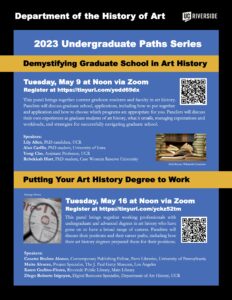 Demystifying Graduate School in Art History
Demystifying Graduate School in Art History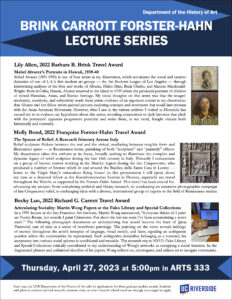
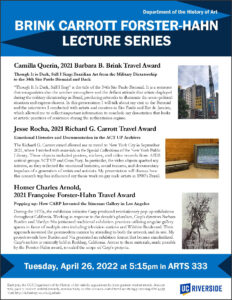
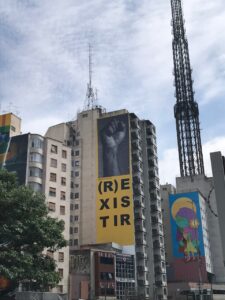
 Jesse Rocha, 2021 Richard G. Carrott Travel Award
Jesse Rocha, 2021 Richard G. Carrott Travel Award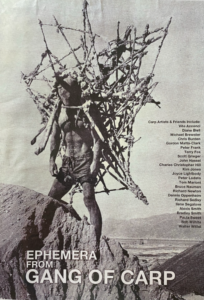 Homer Charles Arnold, 2021 Françoise Forster-Hahn Travel Award
Homer Charles Arnold, 2021 Françoise Forster-Hahn Travel Award